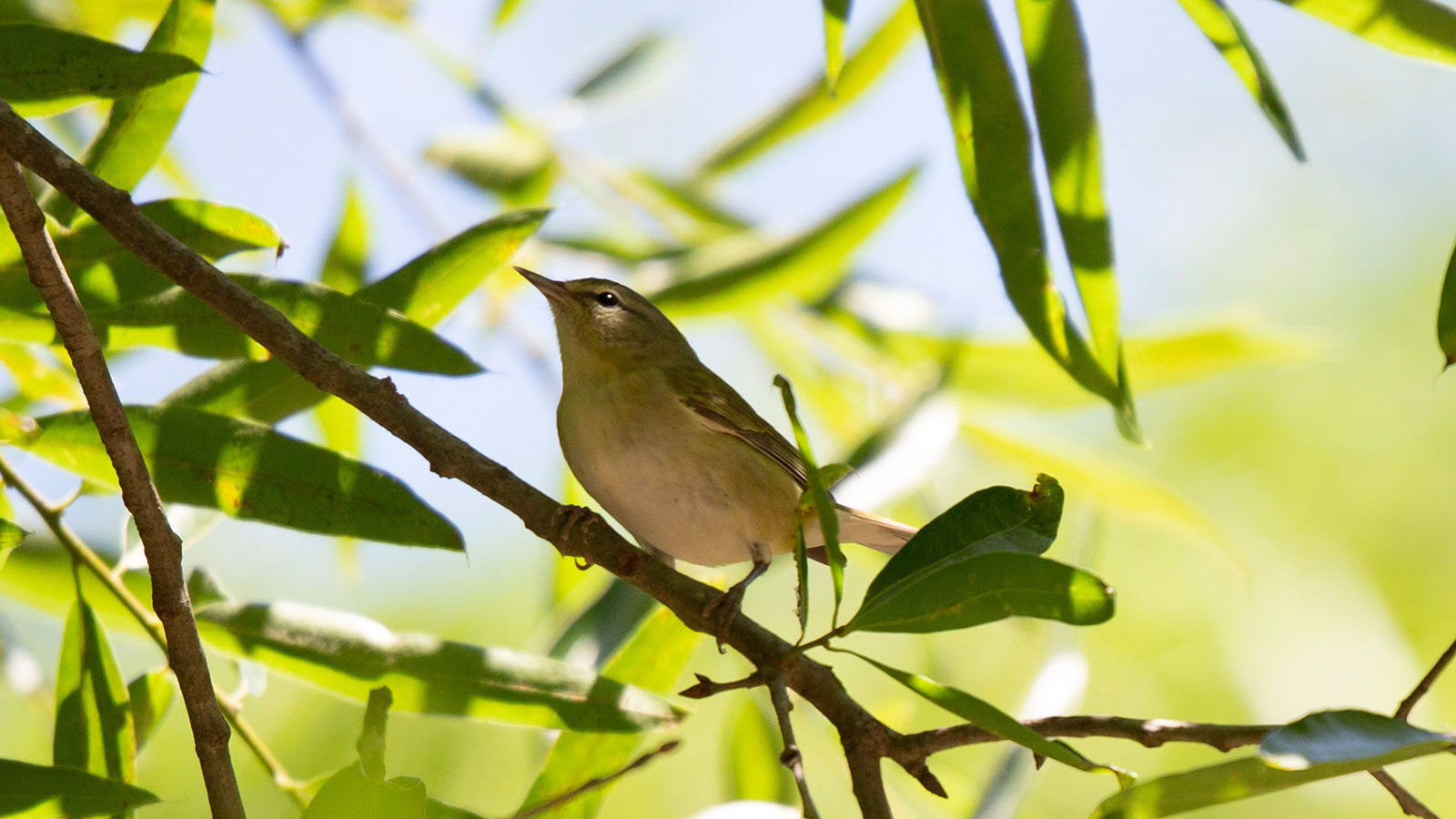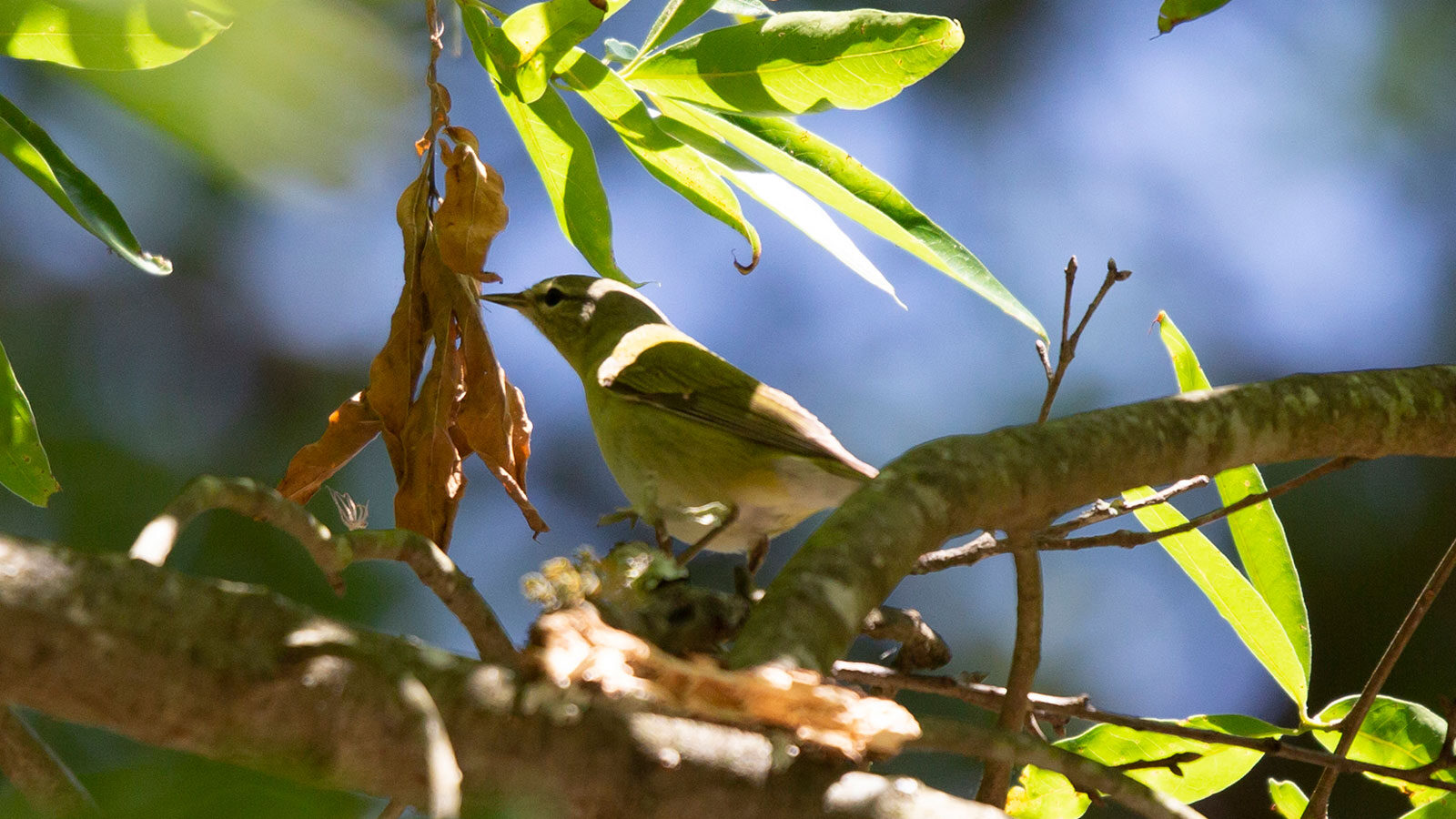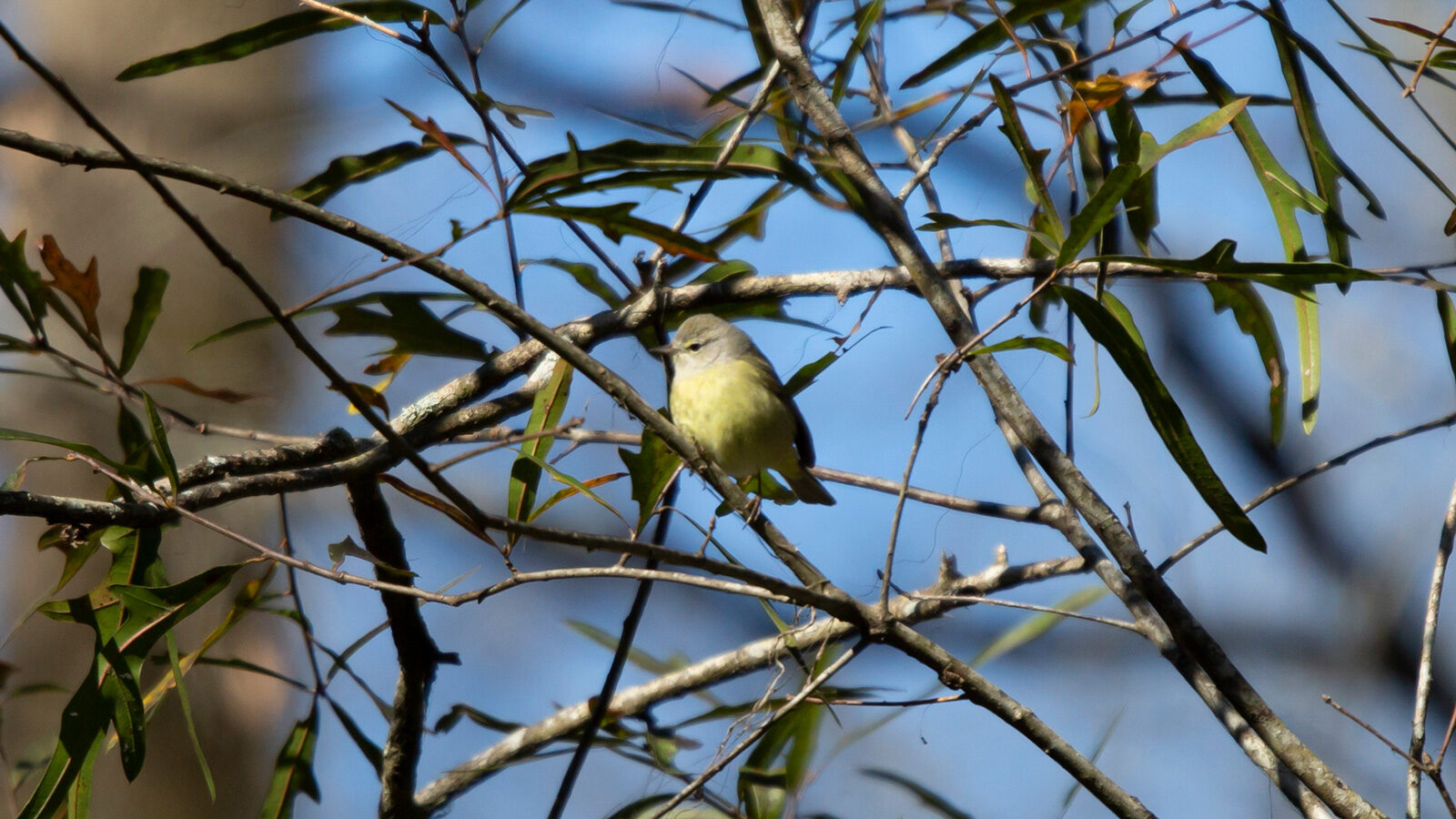
Did you know that Tennessee warblers get nectar from lower in the flowers than the pollen is so they do not pollinate?
Tennessee Warblers
at
a Glance

Key Features:
Tennessee warblers are olive with gray heads and white undersides.
Least Concern - Population Stable
Habitat:
Forests
nesting habits:
Tennessee warblers build their nests in moss or or at the foot of fallen trees out of grass, hair, moss, and weed stems.
seasons tennessee warblers are active in our area:
Spring and fall
Diet:
Insects and nectar
hunting Behavior:
Tennessee warblers forage by gleaming from leaves and drinking nectar from flowers.
commonly confused with:
Orange-crowned Warblers, Philadelphia Vireos, Red-eyed Vireos, and Warbling Vireos

Tennessee warblers are often confused with orange-crowned warblers due to their gray heads.

Tennessee warblers are often confused with red-eyed vireos due to both being small olive birds with gray heads.